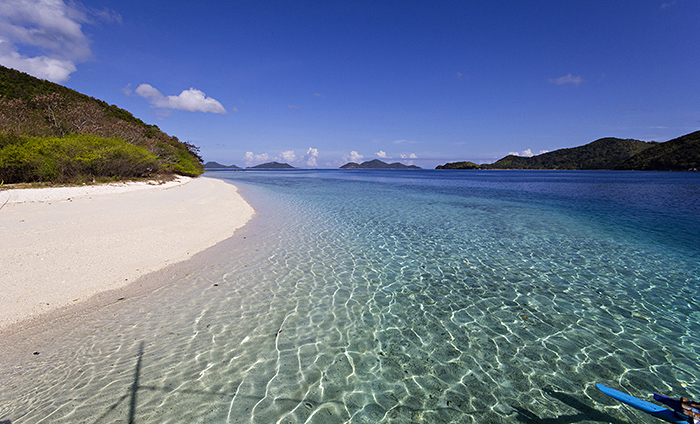Our beloved planet is like a box of chocolates. You never know what you’re gonna get. Years, decades of travel, and amazing places keep coming out. In this case the Philippines, an archipelago of over 7000 islands , with spectacular beaches and seabeds.
Map of the places I visited :
Besides Manila, I went on the island of Palawan, in particular the archipelago between Coron and El Nido, and on some islands north of Cebu.
I’ll tell you my journey with photos, but first a little bit of history of Philippines.
“Noooo the history nooo… show us the pictures!”
Ok, I put it aside, actually it came out a bit too long. So, for those few who want to read a recap of the history of the Philippines, click here.
Ignorants, none of you clicked (I have the statistics updated per second). However ok, let’s see the photos.
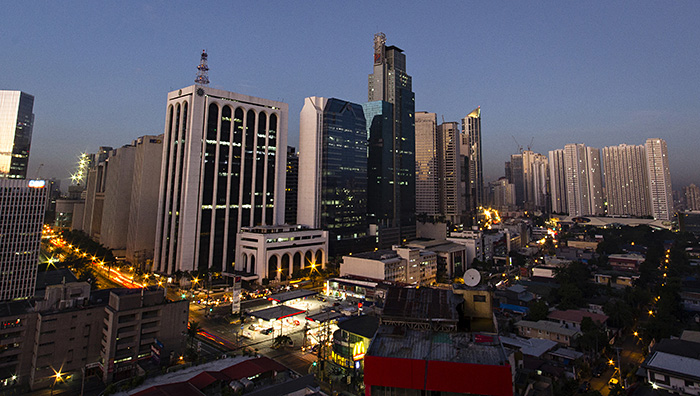 Manila wakes up, and Dekaro with her. Thanks to the time zone difference I was unusually early-rising. The view is from my room in Makati, the financial district of Manila.
Manila wakes up, and Dekaro with her. Thanks to the time zone difference I was unusually early-rising. The view is from my room in Makati, the financial district of Manila.
 Buildings. There is not much to see in Manila because the city was almost completely destroyed by USA bombing during the Japanese occupation in the second World War and never recovered since then. Also, it is difficult to move around due to an incessant traffic jam.
Buildings. There is not much to see in Manila because the city was almost completely destroyed by USA bombing during the Japanese occupation in the second World War and never recovered since then. Also, it is difficult to move around due to an incessant traffic jam.
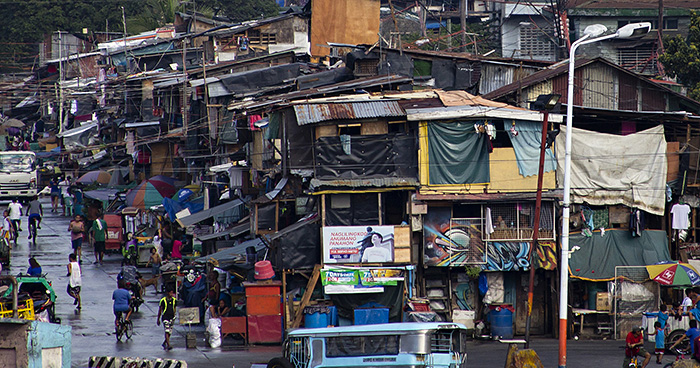 As in many big cities of the world, there is a strong contrast between rich areas and poor areas, often one next to the other. I asked the taxi driver if these areas are dangerous. He responded enthusiastically that until a couple of years ago they were, but now, since there is Duterte, no more because whoever commits a crime “a couple of days later is shot in the head by two hit men on motorbike with black helmets”. I pointed out that perhaps it is a bit exaggerated as a method, but there was no way to convince him, he was instead increasingly passionate about the determination of the new president.
As in many big cities of the world, there is a strong contrast between rich areas and poor areas, often one next to the other. I asked the taxi driver if these areas are dangerous. He responded enthusiastically that until a couple of years ago they were, but now, since there is Duterte, no more because whoever commits a crime “a couple of days later is shot in the head by two hit men on motorbike with black helmets”. I pointed out that perhaps it is a bit exaggerated as a method, but there was no way to convince him, he was instead increasingly passionate about the determination of the new president.
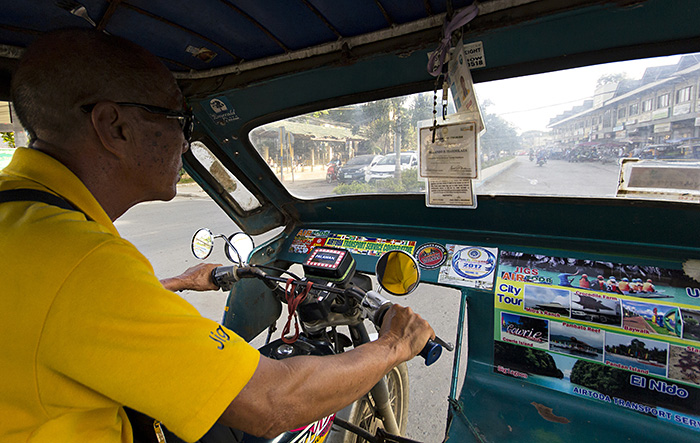 In Puerto Princesa, in Palawan. I’m inside one of the most used vehicle for public transportation in the Philippines: the motorized tricycles.
In Puerto Princesa, in Palawan. I’m inside one of the most used vehicle for public transportation in the Philippines: the motorized tricycles.
 A little north of Puerto Princesa, there is a natural wonder: the underground river of Sabang. A little boat goes inside a cave for almost two kilometers, between stalactites and stalagmites.
A little north of Puerto Princesa, there is a natural wonder: the underground river of Sabang. A little boat goes inside a cave for almost two kilometers, between stalactites and stalagmites.
 In Coron Bay. The town of Coron is ugly, but the tours in its bay are among the most beautiful in the world. In particular, going inside some freshwater lagoons connected to the sea. I didn’t take photos of lagoons because often I had to reach them swimming. They are amazing: overhanging rock walls enveloping green waters. Likewise spectacular is snorkeling, with corals of all shapes and colorful fish. At one point I could even see a Japanese ship sunk during the Second World War!
In Coron Bay. The town of Coron is ugly, but the tours in its bay are among the most beautiful in the world. In particular, going inside some freshwater lagoons connected to the sea. I didn’t take photos of lagoons because often I had to reach them swimming. They are amazing: overhanging rock walls enveloping green waters. Likewise spectacular is snorkeling, with corals of all shapes and colorful fish. At one point I could even see a Japanese ship sunk during the Second World War!
This photo was taken near the Kayangan lake.
 The “Jorizelle” is ready to weigh anchor for a three day tour from Coron to El Nido. It was the most beautiful part of the trip.
The “Jorizelle” is ready to weigh anchor for a three day tour from Coron to El Nido. It was the most beautiful part of the trip.
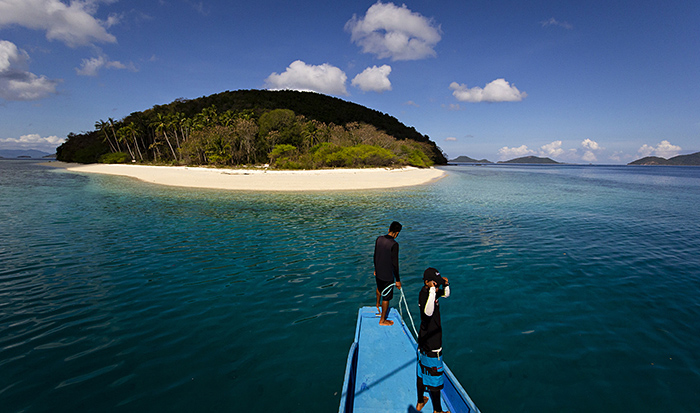 From time to time we landed on lonely islands. The seabed under the crystal water had corals and fish of all kinds.
From time to time we landed on lonely islands. The seabed under the crystal water had corals and fish of all kinds.
 In the night we stopped on small islands with bungalows.
In the night we stopped on small islands with bungalows.
 And after, on the big blue again.
And after, on the big blue again.
 “And deep beneath the rolling waves, in labyrinths of coral caves, the echo of a distant tide comes willowing across the sand. And everything is green and submarine…”
“And deep beneath the rolling waves, in labyrinths of coral caves, the echo of a distant tide comes willowing across the sand. And everything is green and submarine…”
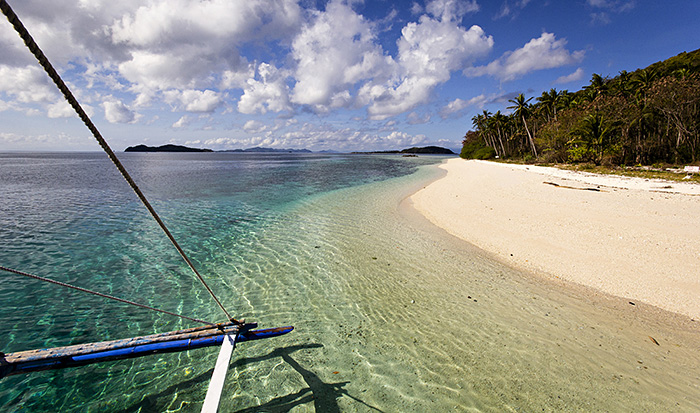 Beaches, beaches, beaches… so many that you almost feel nausea at one point. You would almost prefer to stay on a sofa watching a Netflix series! I’m joking, of course. You never get tired, not even in ten lives.
Beaches, beaches, beaches… so many that you almost feel nausea at one point. You would almost prefer to stay on a sofa watching a Netflix series! I’m joking, of course. You never get tired, not even in ten lives.
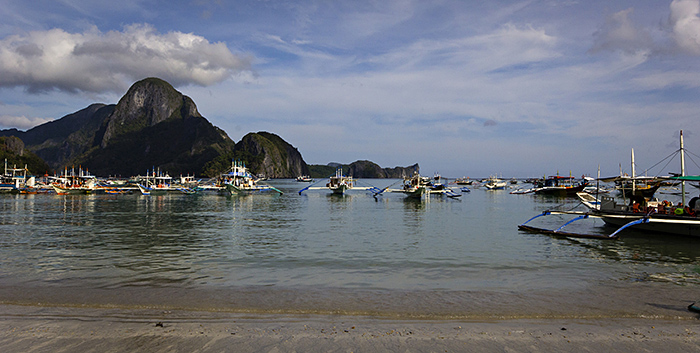 And at end, after three days, we reached El Nido. Like Coron, El Nido is pretty ugly but perfect as a base for tours around the archipelago.
And at end, after three days, we reached El Nido. Like Coron, El Nido is pretty ugly but perfect as a base for tours around the archipelago.
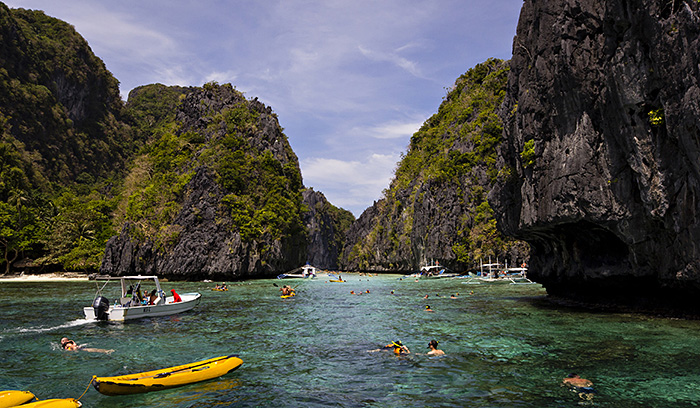 Tourists swimming or kayaking towards the Great Lagoon. Even more spectacular is the Little Lagoon, which can only be reached by passing under a low rock with a kayak. Since almost none of the tourists was very practical in driving the kayak, it seemed like a huge bumper car, with kayaks instead of cars.
Tourists swimming or kayaking towards the Great Lagoon. Even more spectacular is the Little Lagoon, which can only be reached by passing under a low rock with a kayak. Since almost none of the tourists was very practical in driving the kayak, it seemed like a huge bumper car, with kayaks instead of cars.
 In Danao, just north of Cebu, where I had to take the ferry to the Camotes islands. I’m inside a taxi-tricycle, it’s a very common there.
In Danao, just north of Cebu, where I had to take the ferry to the Camotes islands. I’m inside a taxi-tricycle, it’s a very common there.
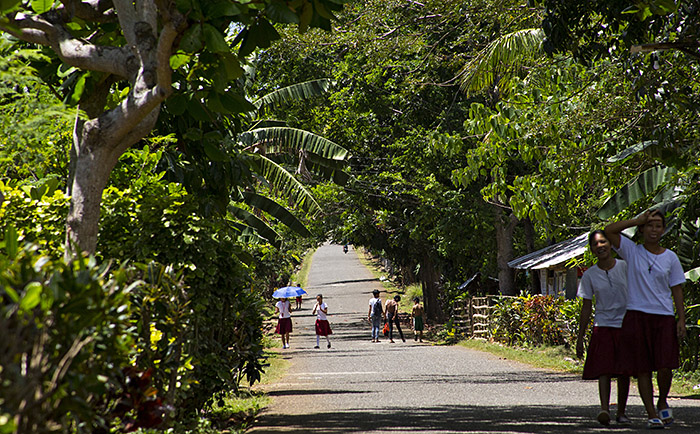 In Pacijan, in the Camotes Islands. The streets are completely surrounded by greenery, it is very pleasant to roam randomly with the scooter. The people is very friendly and, needless to say, there are beautiful beaches.
In Pacijan, in the Camotes Islands. The streets are completely surrounded by greenery, it is very pleasant to roam randomly with the scooter. The people is very friendly and, needless to say, there are beautiful beaches.
 A road in Poro, the second largest island of the Camotes, connected by a bridge to Pacijan.
A road in Poro, the second largest island of the Camotes, connected by a bridge to Pacijan.
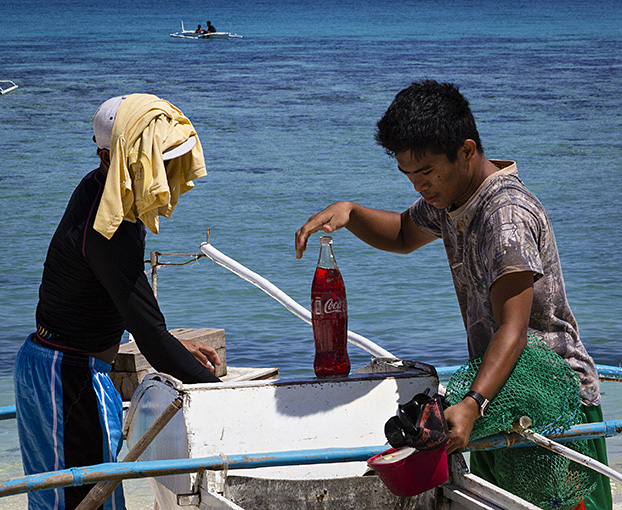 Fishermen in Malapascua, another beautiful island.
Fishermen in Malapascua, another beautiful island.
 Little girl forcibly turning the head of her brother to let me take a picture.
Little girl forcibly turning the head of her brother to let me take a picture.
 Boats in the island of Bantayan, my last stop.
Boats in the island of Bantayan, my last stop.
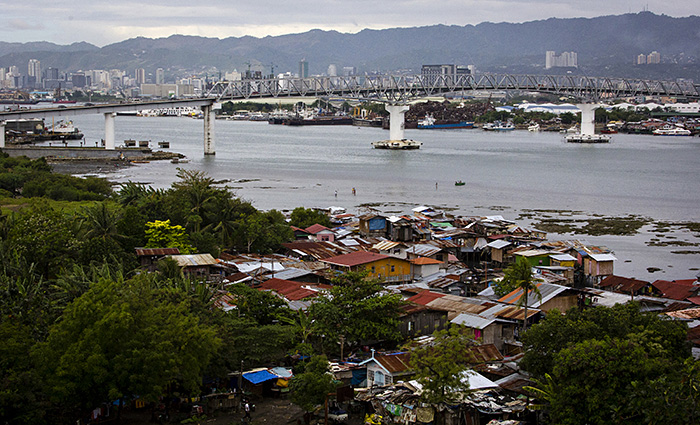 Cebu, the second city of the Philippines and former capital. Here too the contrast between rich and poor areas is evident. On this side of the river there is the island of Mactan, also called Lapu-Lapu, from the name of the ruler of the tribe that here defeated and killed Magellano in battle.
Cebu, the second city of the Philippines and former capital. Here too the contrast between rich and poor areas is evident. On this side of the river there is the island of Mactan, also called Lapu-Lapu, from the name of the ruler of the tribe that here defeated and killed Magellano in battle.
After that, the long return home. 32 hours from the hotel in Cebu to my room in Malta.
























































